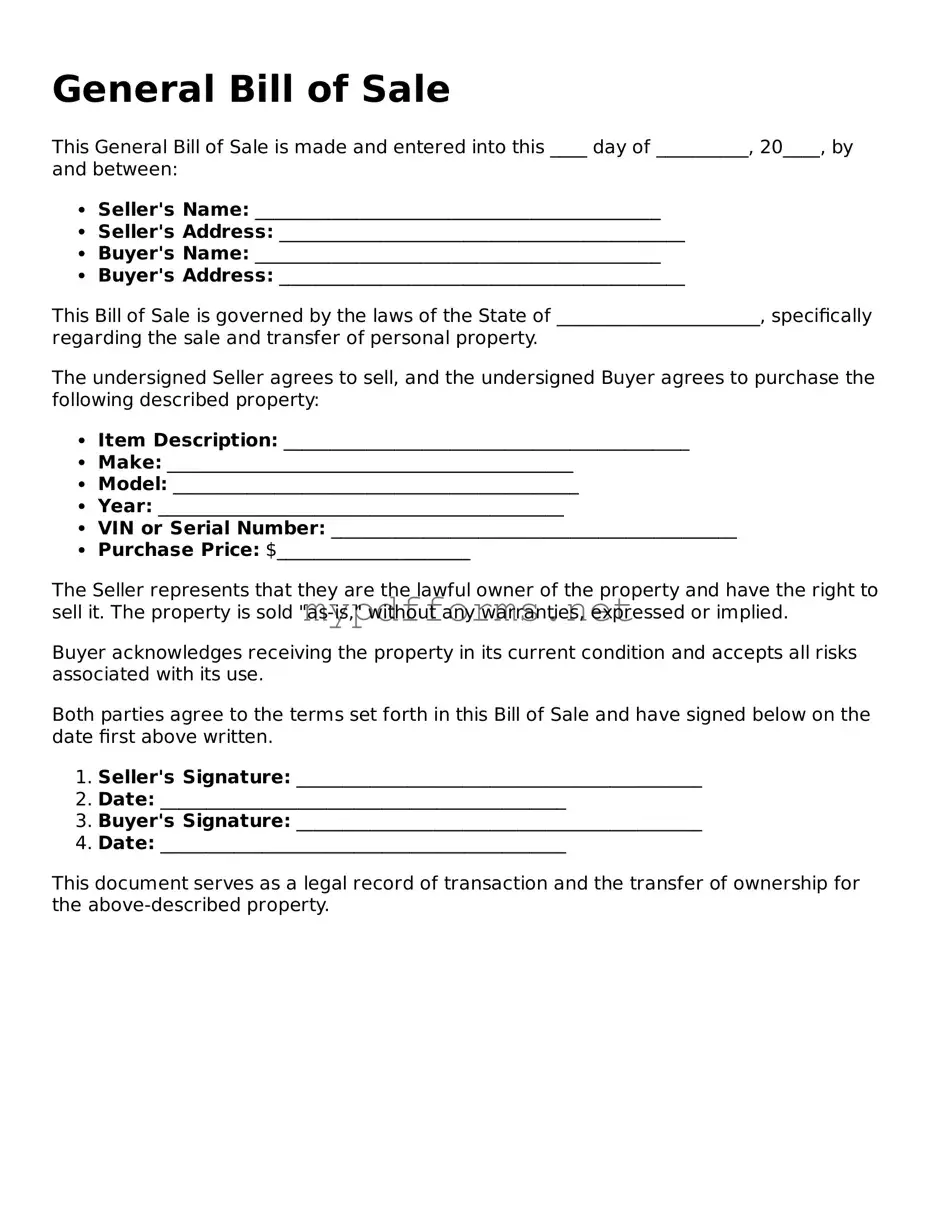The General Bill of Sale is similar to a Vehicle Bill of Sale, which specifically documents the transfer of ownership for a motor vehicle. This document typically includes details such as the vehicle identification number (VIN), make, model, and year of the vehicle. Both forms serve the purpose of providing proof of sale and ownership transfer, ensuring that both parties have a clear record of the transaction. A Vehicle Bill of Sale may also contain information about the buyer and seller, including their names and addresses, similar to the General Bill of Sale.
Another document akin to the General Bill of Sale is the Equipment Bill of Sale. This form is used when selling or buying equipment, such as machinery or tools. Like the General Bill of Sale, it captures essential details about the item being sold, including its condition and any warranties. Both documents protect the interests of both parties by outlining the terms of the sale and providing a record that can be referenced in the future if needed.
The Personal Property Bill of Sale is also comparable to the General Bill of Sale. This document is used for the sale of personal items, such as furniture, electronics, or collectibles. It serves a similar purpose in documenting the transfer of ownership and ensuring that both the buyer and seller have a written record of the transaction. The Personal Property Bill of Sale may include a description of the items sold, their condition, and any agreements made between the parties, just like the General Bill of Sale.
Among various transaction documents, the California Motorcycle Bill of Sale form is particularly crucial for motorcycle sales, as it not only records the exchange but also provides essential protection for both the buyer and seller. By including details such as the parties involved and the motorcycle's specifics, this document ensures clarity throughout the process. For those looking to draft this important form, the Motorcycle Bill of Sale form is a valuable resource that can simplify the transaction.
In addition, the Firearm Bill of Sale is relevant when discussing documents similar to the General Bill of Sale. This specific form is used for the sale of firearms and includes details such as the make, model, and serial number of the firearm. Both documents help establish a legal record of the transaction and protect both parties involved. The Firearm Bill of Sale often requires the buyer and seller to provide identification, ensuring compliance with local laws, which is an important aspect shared with the General Bill of Sale.
The Boat Bill of Sale is another document that mirrors the General Bill of Sale. Used for the sale of boats and watercraft, this form includes information about the boat, such as its registration number, hull identification number, and any accessories included in the sale. Both forms serve to document the transfer of ownership and provide a clear record for both parties. The Boat Bill of Sale may also address any liens or encumbrances, similar to how the General Bill of Sale outlines the terms of the sale.
Lastly, the Lease Agreement can be considered similar in function to the General Bill of Sale, though it serves a different purpose. A Lease Agreement outlines the terms under which one party rents property from another. While the General Bill of Sale documents a sale, both documents establish clear terms and conditions for the transaction. They both provide a written record that can help resolve disputes and clarify the responsibilities of each party, ensuring that both parties are aware of their rights and obligations.
